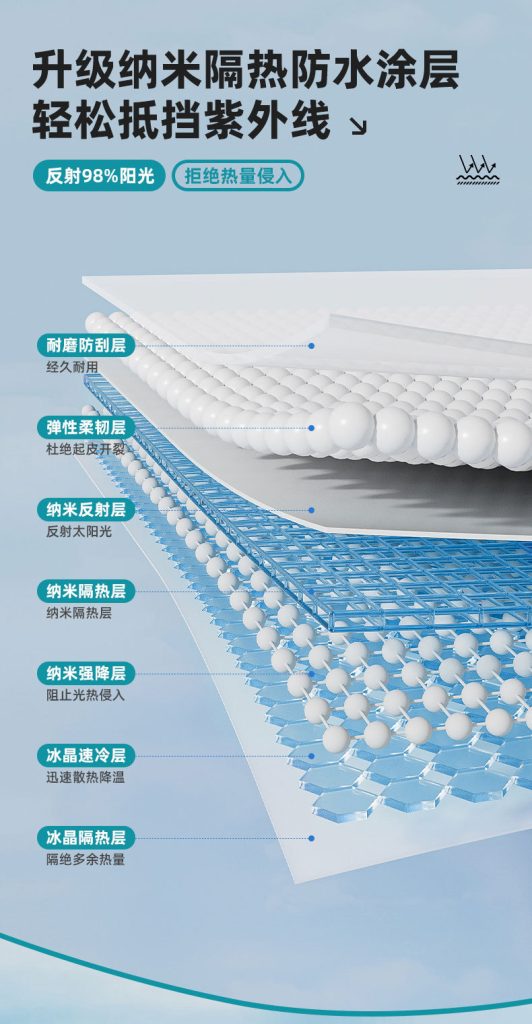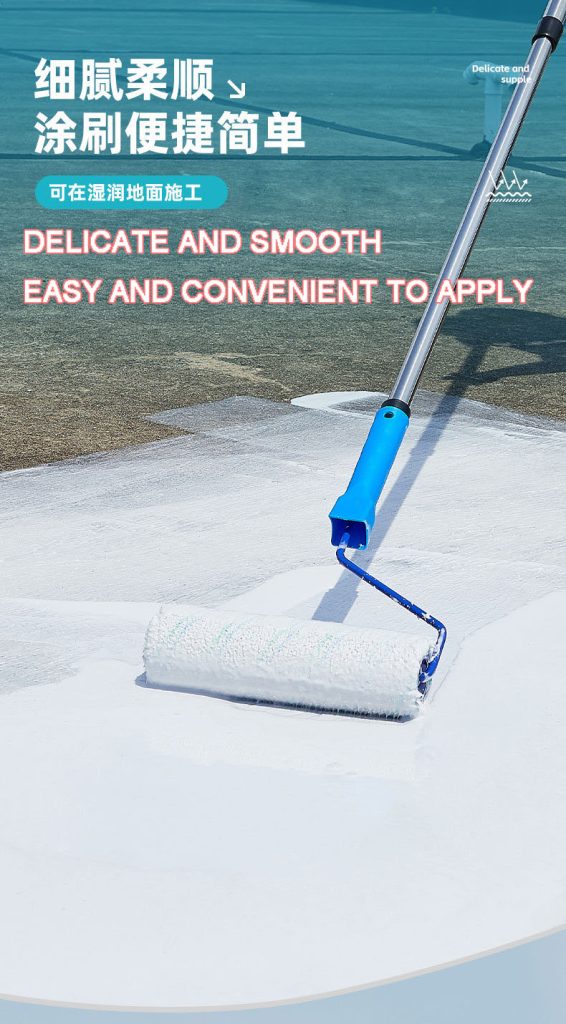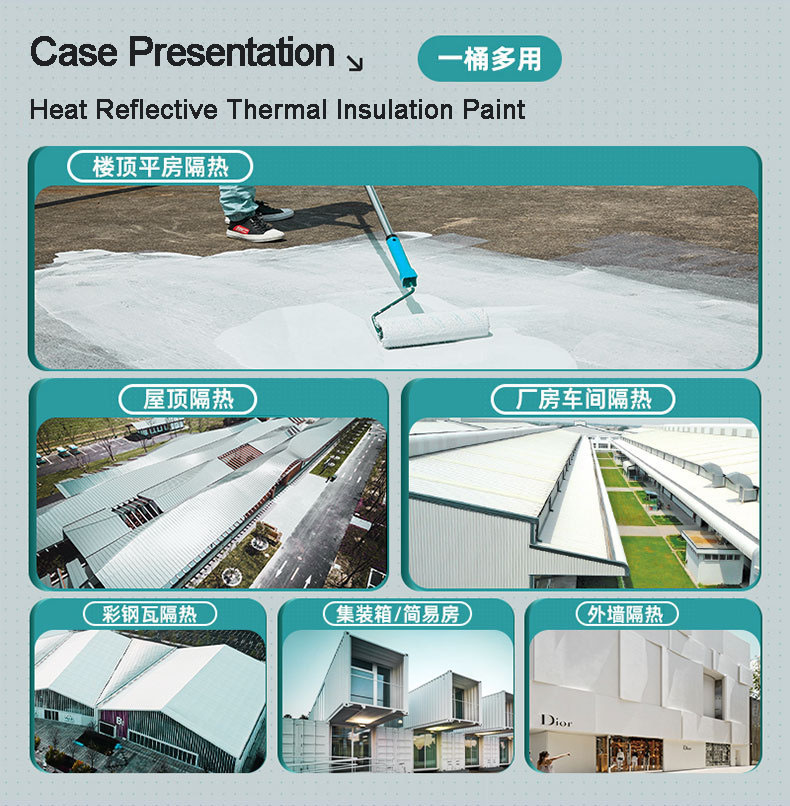It is necessary to apply sunscreen coating to the house, especially in environments with strong direct sunlight. Sunscreen coatings can effectively reflect sunlight, reduce heat absorption in buildings, thereby lowering indoor temperatures and saving on air conditioning costs. Reflectivity>98%, substrate cooling>35 ℃, effectively avoiding thermal energy accumulation and conduction.
The function and effectiveness of sunscreen coatings
The main function of sunscreen coating is to reflect infrared or thermal visible light, reduce radiative heat transfer, and usually lower the surface temperature of objects by 15-30 degrees Celsius under strong sunlight. Even on cloudy days and nights, it can lower the temperature by about 5 degrees Celsius. For walls with small cracks, painting has good waterproof and leak proof effects, and different colors of cooling coatings can be applied according to different scene requirements. In addition, sunscreen coatings have the advantages of self-cleaning, waterproofing, sun resistance, alkali resistance, thermal insulation and cooling. They are environmentally friendly and have a long service life, making them a new type of cooling and energy-saving material.

Application scenarios and construction methods of sunscreen coatings
Sunscreen coatings are commonly used on metal and concrete substrates. Suitable for various building or equipment surfaces that require reflection of sunlight and insulation, such as factory roofs, warehouse roofs, building exterior walls, chemical storage tanks, petrochemical storage tanks, pharmaceutical storage tanks, aerospace equipment, transportation equipment, offshore equipment, etc. During construction, products with good reflectivity and weather resistance should be selected and operated by professionals to ensure uniform and smooth coating, achieving the best results.
- The color steel tile substrate must be stable, not shake, and free of dust and oil impurities. Rusty substrates should be polished clean with a grinder, rinsed with a high-pressure water gun, and dried, or treated with rust fixing agents to convert and fix rust.
- Before the construction of concrete substrate, the surface must be cleaned to ensure dryness, no grease, no dirt, mold, algae and other attachments. New gray sand, batch sand, and cement surfaces should be dried thoroughly (it is recommended to spray a layer of primer on the cement substrate).
- Open the material barrel and mix the heat reflection insulation coating evenly with a mixing tool. Use a sprayer or drum to evenly spray the heat reflection insulation coating onto the processed substrate, and cross spray twice. (After the first coat is completely dry, spray the second coat), ensure the thickness of the coating, and do not cut corners (if it is too thick for construction, it is recommended to add water at a ratio of 10% -15% of the weight of the coating). Each kilogram can be coated with approximately 2.5-3 m ² (2 coats).

Conclusion:
- Significant cooling effect: multiple cooling effects combined, good insulation effect;
- Environmental Protection: No heavy metals, formaldehyde VOC、 No volatile substances, it is an environmentally friendly product;
- Good self-cleaning properties: The coating surface is hydrophobic and oleophobic, with good resistance to adhesion and dirt, and resistant to washing and wiping;
- Good weather resistance: Strong weather resistance, excellent UV resistance, and a lifespan of up to 10 years;
- Strong anti-corrosion performance: The coating is resistant to acid, alkali, and acid rain, and can withstand various harsh weather tests;
- Strong waterproof performance: The coating is tough, non cracking, non peeling, non aging, effectively preventing water leakage, and resistant to water erosion;
- Good adhesion: After coating application, there will be no cracks, peeling, flaking or powdering phenomenon;
- Easy to apply: The paint is only applied once, making it easy to apply. It can be sprayed, brushed, or roller coated;

